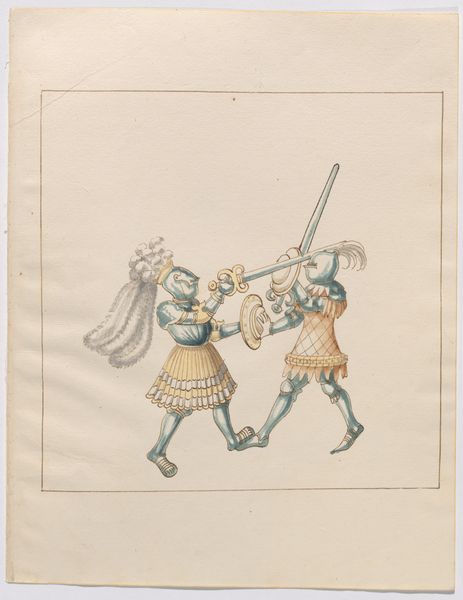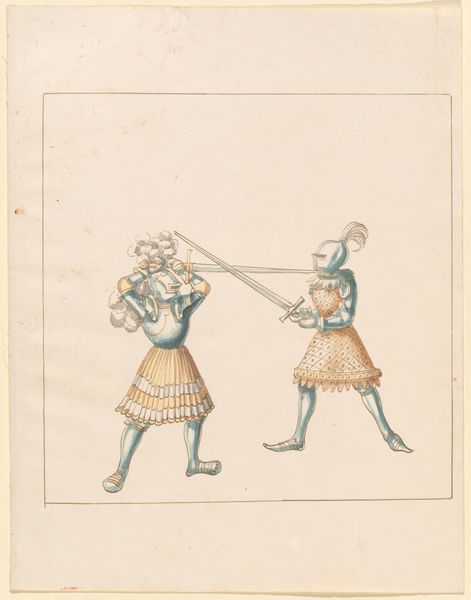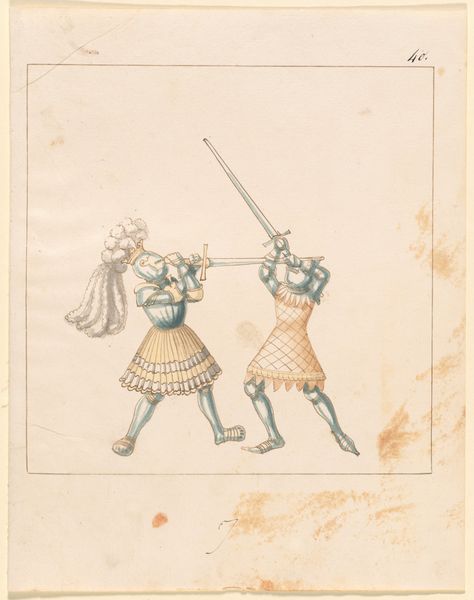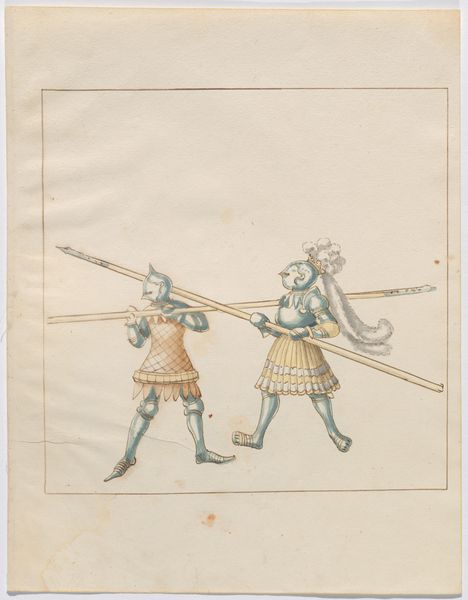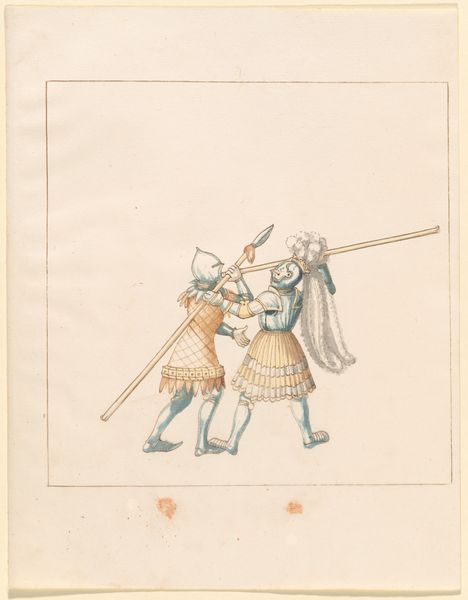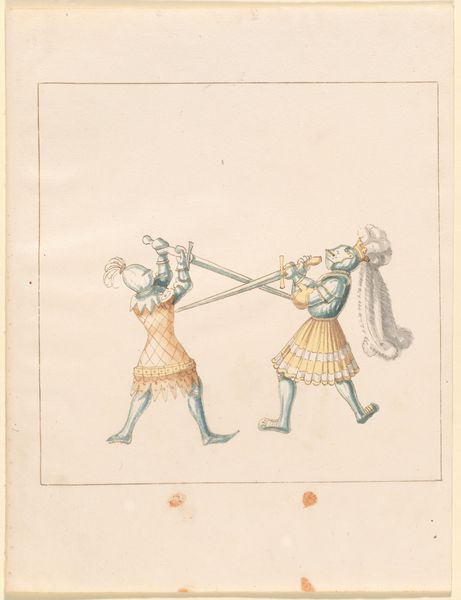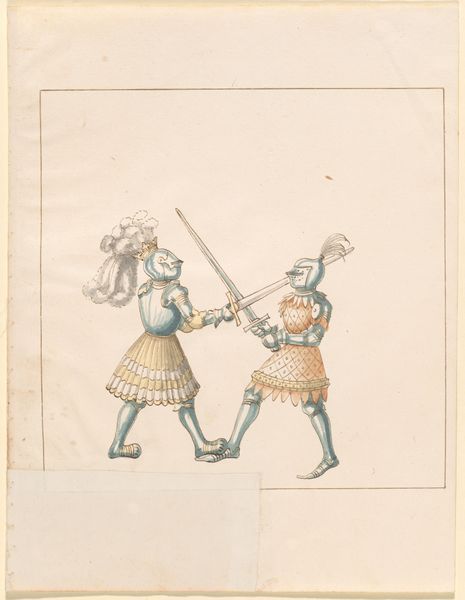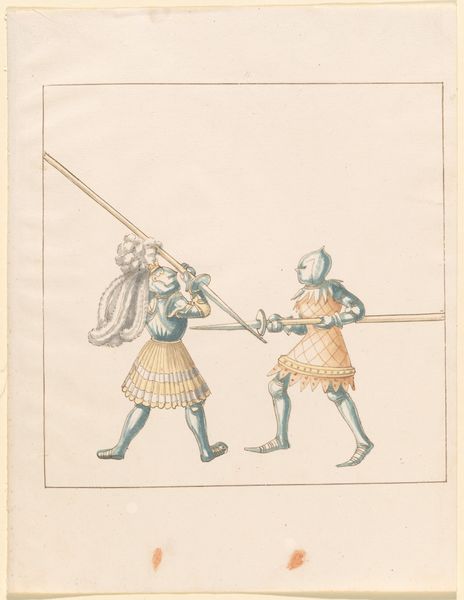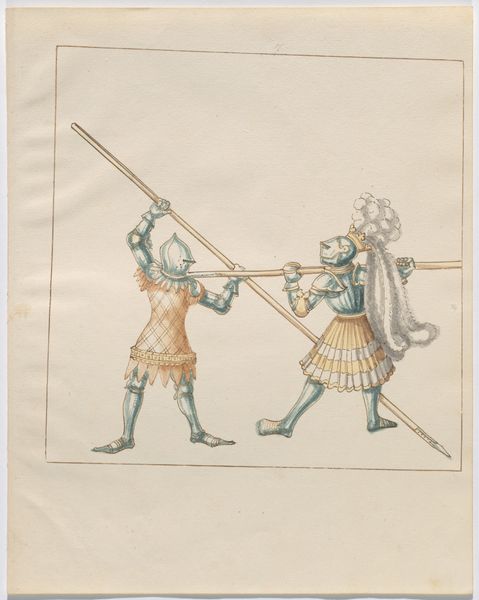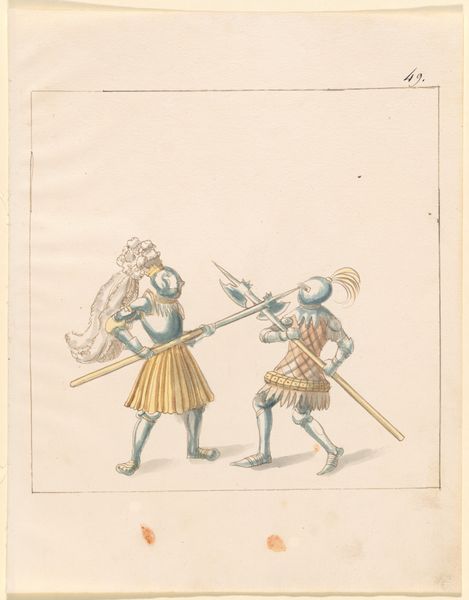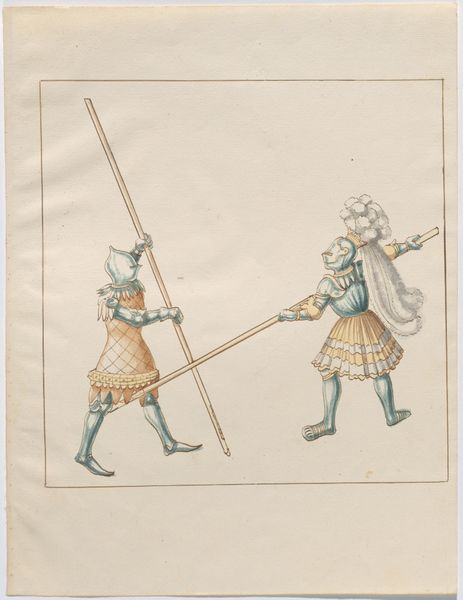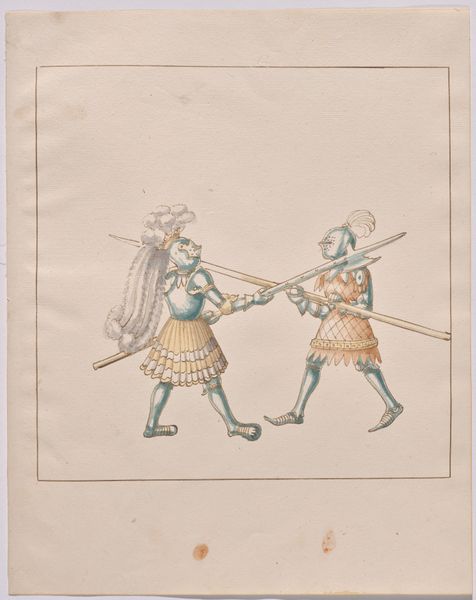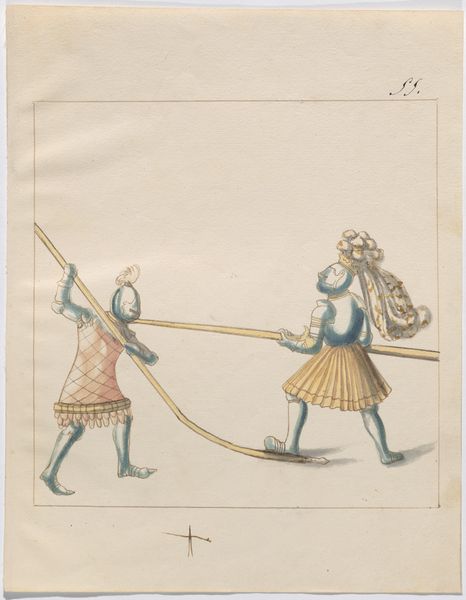
drawing, coloured-pencil, watercolor
#
drawing
#
coloured-pencil
#
medieval
#
water colours
#
figuration
#
11_renaissance
#
watercolor
#
coloured pencil
Dimensions: sheet: 33.5 × 26.4 cm (13 3/16 × 10 3/8 in.)
Copyright: National Gallery of Art: CC0 1.0
Curator: Here we have "Foot Combat with Longswords," a watercolor and colored pencil drawing made circa 1512-1515 by an anonymous artist during the Renaissance. What strikes you first? Editor: The deliberate lightness, almost fragility of the medium, given the intensity of the subject. You expect bold strokes, heavier pigments…but this is almost ornamental. Curator: Indeed. Observe how the crossed longswords establish a central axis, bisecting the composition. This creates a symmetrical tension that is visually compelling. It implies a precise choreography. Editor: Which hides the sheer labor involved. Consider the meticulous craft of fashioning armor – each piece hammered, fitted, polished, each customized weapon reflecting specific metallurgical practices, then the training regimes they surely undertook to wield those weapons. That's hours, upon hours. Curator: You're speaking to the culture of the Renaissance warrior. Yet, in terms of form, it’s intriguing to see the application of light in defining their bodies beneath the armor, creating an ethereal quality against the stark, blank page. Editor: I think that lightness underscores the elite status these combatants hold. Armor like this isn't readily available. Its creation represents investment, control over resources and labor. It transforms the conflict into a spectacle, maybe even something more refined. Curator: So the application and display of martial culture turns almost... theatrical? Editor: It asks us to consider the relationship between material means and aesthetic presentation. And that's not a given: the very act of fighting is itself, brutal and messy, regardless of class. This drawing obscures that reality. Curator: An astute reading of visual language! Seeing how medium, form, and technique all contribute to shaping a specific narrative and understanding of history. Thank you for lending your material insights today! Editor: Thank you. Reflecting on material and its impact helps unveil often unseen assumptions.
Comments
No comments
Be the first to comment and join the conversation on the ultimate creative platform.
